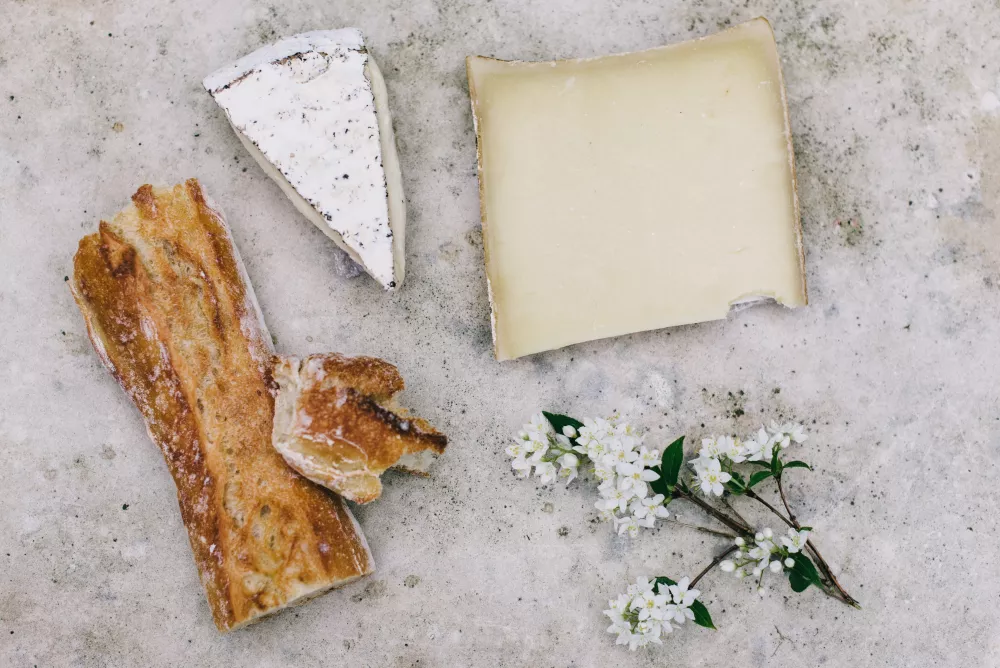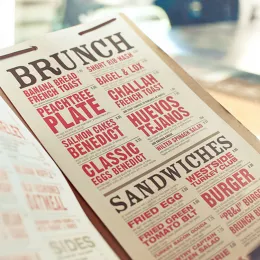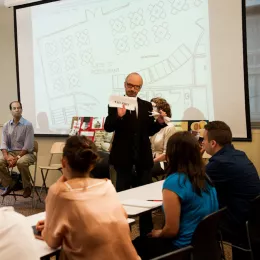On Tuesday, October 8th, ICE welcomed Guittard Chocolate Company’s Regional Sales Manager, Laura Tornichio-Vidal, and Harney and Sons’ Vice President, Michael Harney, to teach participants the art of a unique pairing: tea and chocolate.
While some might deem these two an unlikely couple, an afternoon spent at ICE with Vidal and Harney would convince any skeptic.
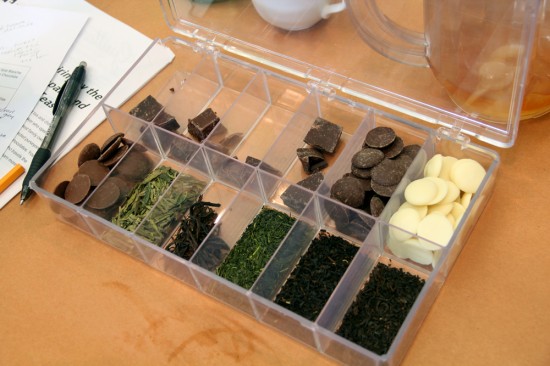
Tea and chocolate, much like wine and cheese, can complement and enhance each others' flavors when properly paired. Vidal and Harney lead the crowd through an interactive tasting, which consisted of pairing six different chocolates with six different teas, clearly showcasing the brilliance of the tea-and-chocolate tango.
Vidal came bearing the best the chocolate the world has to offer from internationally renowned chocolatier, Guittard, including chocolate derived from beans grown in Sur del Lago, Madagascar, Ecuador, and Machu Picchu. Harney came equally well-equipped, wielding a multitude of tea varietals from Harney & Sons--one the most highly respected tea blenders across the globe--including whites, greens, blacks, and oolongs.
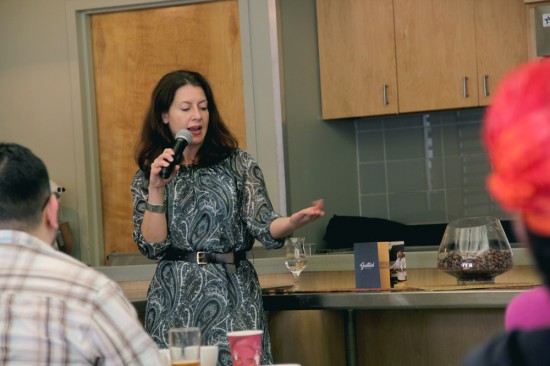
The first pairing set the stage for an incredible, taste-budding-opening afternoon. In what proved to be an ingenious match, Harney and Vidal chose to pair a white tea, Bai Mudan, with a Sur del Lago 65% Cacao Bittersweet Chocolate (a hybrid of the Criollo and Trinitario cacao beans). The delicate, floral notes of the Bai Mudan married perfectly with the smooth, consistent sweetness of the Sur del Lago. Despite its high cacao content, the Sur del Lago had no bitter aftertaste, as many dark chocolates do. Similarly, the Bai Mudan, as is characteristic of many white teas, lacked the acidic bite of its green tea cousin. The result: a tea-and-chocolate match made in gustatory heaven.
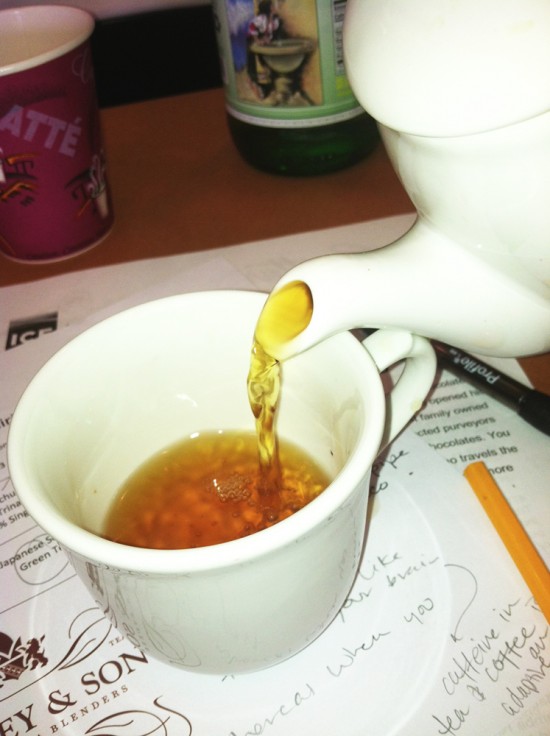
As we continued with the tasting, Harney and Vidal drew our attention to the importance of smell to our overall enjoyment of the chocolate-tea experience. Harney pointed out that we are able to smell with far more complexity than we can taste. In other words, while our palate can generally only recognize five different flavors, our noses can detect a wide variety of smells. Further, smells immediately register in the main brain, whereas tastes register in another area of the brain and take longer to process.
Harney demonstrated the power of scent with one of the teas he brought—an organic peach black tea. One whiff and images of fresh peaches immediately came to mind, but the taste of peach was far subtler.
Vidal recommended we couple the peach tea with a delicate white chocolate to enhance the flavors. The peach tea not only accented the subtle sweetness of the chocolate but actually conjured up the sensation of biting into warm, juicy peaches topped with fresh whipped cream--truly a full sensory experience.
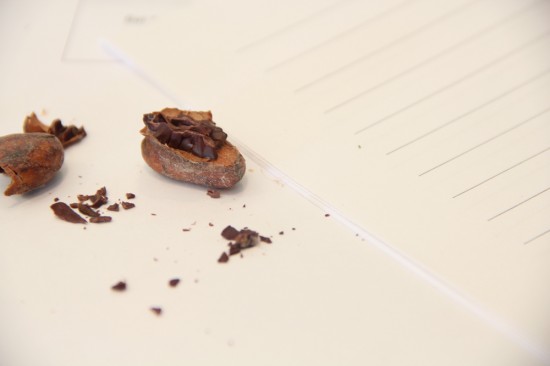
The two guest speakers also shared some little-known facts about tea and chocolate, even for the self-proclaimed aficionados in the room. Ever wonder why tea contains caffeine? According to Harney, caffeine in tea leaves serves as a defense mechanism against bugs. Once a bug bites into a tea leaf, it immediately gets a boost of energy from the caffeine, which encourages the bug to move on.
There is also a misconception that chocolate contains caffeine. According to Vidal, chocolate, and the cacao beans it stems from, are completely caffeine free. However, if you find yourself a little energized after eating some chocolate, you aren’t imagining things; Vidal explained that chocolate has components that act like caffeine in the brain, hence the common misconception that it contains caffeine.
While it was difficult to reach a group consensus on a favorite tea-and-chocolate-match, an afternoon spent pairing the two certainly convinced us of one thing: this high-powered couple could make a serious splash on the culinary scene.


